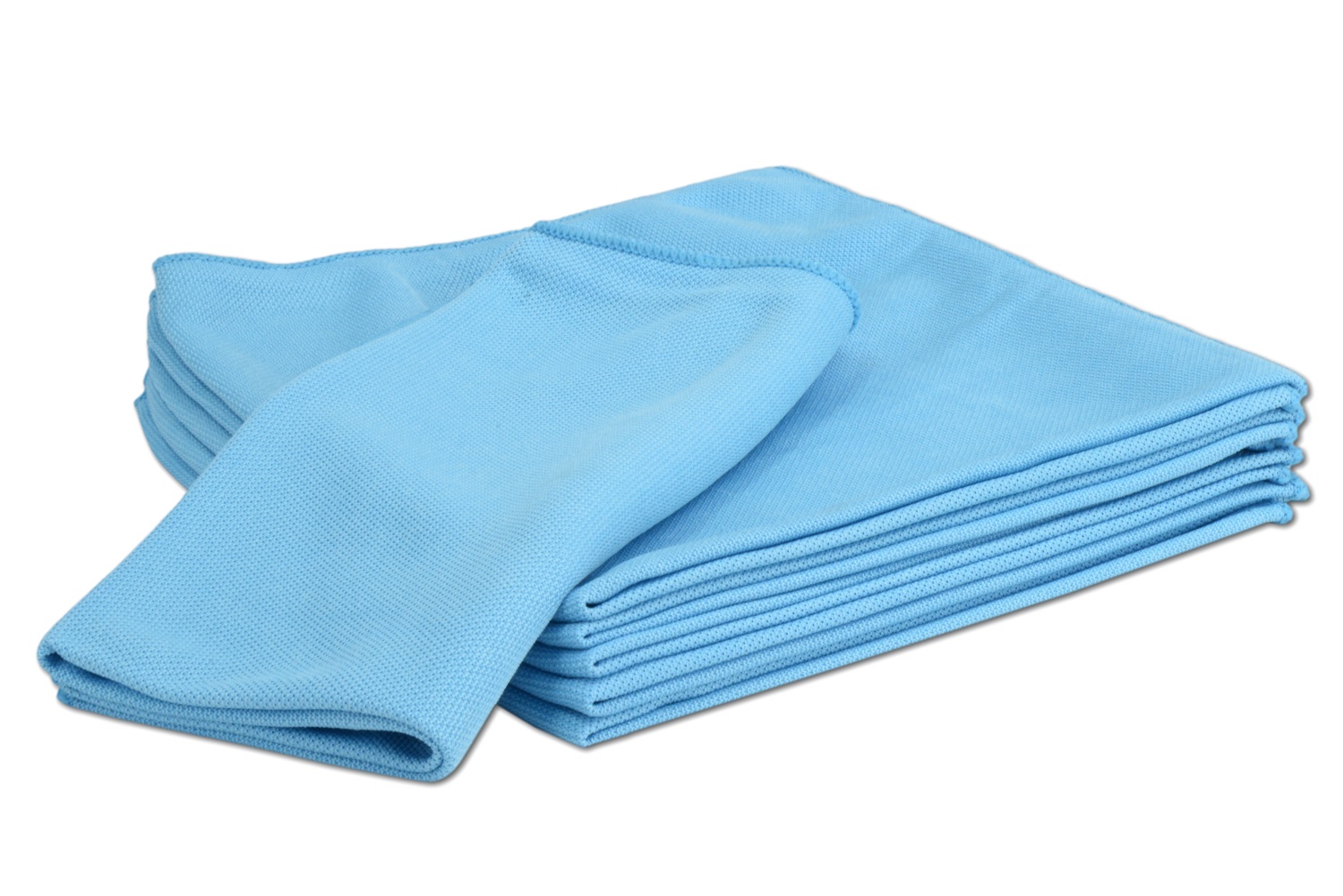
Microfiber Cloth: Essential Guide for Cleaning Professionals
What is microfiber cloth?
Microfiber is a super fine synthetic fibre, so fine, that its diameter is smaller than that of human hair. This unique ability gives microfiber cloth special qualities that set it apart from other regular cleaning products.Why microfiber cloth?
It is economical
Because of their special structure, quality microfiber cloths can last for years, especially if they are taken good care of - a single micro cleaning cloth can be laundered and reused 400-500 times. Microfiber cleaning rags are so absorbant that very little or usually no cleaning products can be used to reach the same result as with regular cloths. This means that even though microfiber cleaning tools can be more expensive, in the long run, much less money is spent on replacing them and buying cleaning agents.It is very effective
The asterisk-like structure of microfiber cloth and rough, uneven surface with little hooks and crannies allows to take in all dirt, dust particles, water and even bacteria and hold them tightly until the cloth is washed. For example, using only water and microfiber cloth for cleaning allows removing 98.9% of bacteria from smooth surfaces. Cotton cleaning cloths, in contrast, can only cling to particles around its smooth outer surface rather than effectively absorb it. Cloths, rags and microfiber towels can absorb as much as six times their weight in liquid and have a much larger surface area, leading to clear and polished surfaces.It is super-universal and easy to use
Using regular cleaning cloth is a true mess. One cloth for surfaces, another for mirrors and the other for wood. With a microfiber, cloth cleaning becomes far easier and quicker. It's one quality cloth for stainless steel surfaces, glass and ceramics, dusting and washing. Cleaning with microfiber cloth mop, towel or cloth doesn't require a lot of effort and leads to positive experiences and effectively reached results in all cleaning spheres.How to choose a quality microfiber cloth?
Not all microfiber cloths are made quality-minded and easy to use. There are a couple of things to mind when choosing a microfiber cleaning cloth - no matter you are wholesale, B2B or individual buyer.Composition
Microfiber cloths for cleaning are made from polyester and polyamide. While the polyester provides the structure of the cloth, the polyamide increases density and absorption. 100% polyester cloths or towels also exist, but they lack in performing vital functions of a cleaning product. Only a mix of polyester and polyamide at a ratio 70/30 or 80/20 can guarantee the top performance of the cloth.Density and weight
A higher weight means higher density. Density is measured in grams per square meter or GSM. The heavier and denser cloth will have more fibre within it, which means longer life and better quality. Denser microfiber cleaning cloths are also more suitable for surfaces that are prone to scratches.How to take care of your microfiber cleaning cloth?
The most important part of effective cleaning with a microfiber cloth is the clean cloth itself. Follow these tips to get the best result possible: • Wash the cloth after every use. Use warm water and gentle detergent. • Avoid fabric softener when washing microfiber cloths. Fabric softener negatively affects the microfiber, resulting in less effective cleaning. • Air dry washed microfiber cloths and be very careful when using tumble dryer - high heat can damage the microfiber.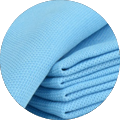
Microfiber cleaning cloths
When people joke about "inventing a new mousetrap" or "reinventing the wheel", what they really mean is that most inventions do their jobs pretty well. There's either little need to think of anything new or little chance of coming up with anything better than we have already. If all inventors believed that, we'd still be living in caves and cooking buffalo stew on camp fires. Even the simplest things can often be done better. Take cleaning, for example—a chore most of us love to hate. Who'd have thought there'd be a better way to scrub things clean than using good old soap and water? If you've tried the latest microfiber cleaning cloths, you'll know that technology really can make life easier. Not only are these cloths more hygienic, they avoid the need for expensive (and often harmful) detergents and they get things looking far cleaner in a lot less time. It's not magic—it's science. Let's find out how these things work!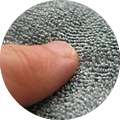
What's different about a microfiber cloth?
Suppose you want to clean a large, dirty wall as quickly and thoroughly as you can. You could use a toothbrush, but it would take you forever. So probably you'd opt to use the biggest brush with the most bristles you can find. Now scale the problem down. If you want to clean a worktop really well, what's the best thing to use? You can't use a gigantic brush or even a huge cloth, but you can achieve the same effect by using a cloth that packs more punch into the same cleaning area. An ordinary cleaning cloth has fibers made of cotton or a synthetic material such as nylon. You've seen pieces of cotton so you know exactly how big the fibers are. But a microfiber cloth has far more fibers and they're much smaller. If "many hands make light work", so do many fingers—or many micro-fibers.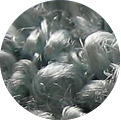
Why do smaller fibers clean better?
Microfibers are able to attach themselves to even the smallest, most microscopic dirt particles—ones that normal cloth fibers (positively giant in comparison) crudely brush past. If forces were visible, you'd be able to see that there are adhesive forces (the forces of attraction) between microfibers and dirt. As you may have learned in school chemistry, these forces are called van der Waals forces after their discoverer, Nobel-prize winning Dutch chemist Johannes Diderik van der Waals (1837–1923). (Van der Waals forces explain why geckos can stick themselves to ceilings using zillions of tiny hairs on their toes.) Although there is only a microscopic amount of van der Waals force between one microfiber and any given dirt particle, remember that there are millions of microfibers in a cloth, so the overall sticking effect is magnified dramatically. That's why dirt, dust, and other stuff can be "hoovered up" by microfiber cloths. And it's also why you have to clean microfiber cloths so very thoroughly after you've used them. (Generally, it's best to boil a microfiber cloth in a saucepan and avoid washing it with normal detergents. Follow the manufacturer's instructions if you're unsure what to do.)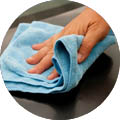
Cleaning with soap and water
Water is pretty good at cleaning most things all by itself. That's because its molecules have two very different ends. They're electrically unbalanced, so they stick to all kinds of things (including lumps of dirt) like tiny magnets and break them apart. Water is sometimes called a universal solvent because it can dissolve so many different things. Where water alone can't help, you can turn to a detergent (a soapy chemical that clings to dirt and grease, breaks it apart, and makes it easier for water molecules to flush it away). Many people don't like using detergents, however. They're expensive, for one thing. Another problem is that they can cause allergic reactions and skin complaints. Some people worry that overusing detergents and cleaning agents—in an effort to make our homes cleaner and more hygienic—is undermining the way our bodies' immune systems naturally defend themselves against germs. Another complaint is that detergents don't simply disappear into thin air. They contain chemicals that flush down our drains into rivers and seas, where they gradually build up and cause water pollution. We might be making our homes cleaner, but we're making the environment dirtier in the process. For all these reasons (and a few more), many people would love to be able to clean their homes without chemicals—and that's where microfiber cleaning cloths can help.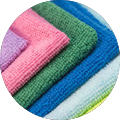
Types of microfiber products
We have developed products with fibers specifically designed for each task—scrubbing floors, dusting and cleaning hard surfaces throughout the house, from wood floors to tile to glass to stainless steel.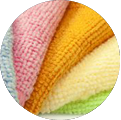
What is microfibre made from?
The most common type of synthetic material that microfibre is made from is polyester, but nylon and other types of polyamides can also be used depending on what the fabrics use will be. On face value, this may not seem as eco-friendly as natural fabrics but it’s worth noting that during the production process of polyester microfibres, absolutely no pesticides are used and the dyeing methods don’t require any water which results in less wastage. Comparatively, a huge amount of water is needed in the dyeing process of cotton. Manufacturers alter and combine various types, sizes, lengths and shapes of fibres to utilise specific characteristics of microfibre, depending on what they’re producing. For example, by using specific types of fibres they can make the fabric water absorbent or extra soft.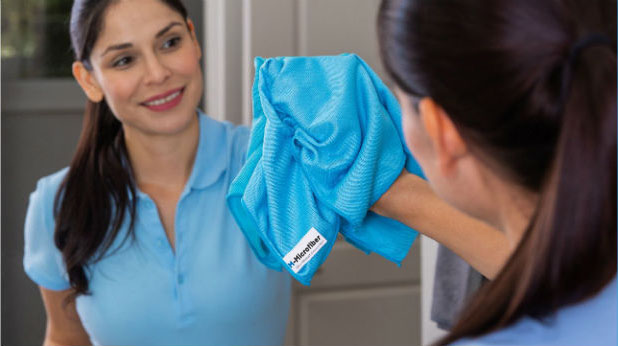
Cleans Any Smooth Surface!
Cleans any smooth surface including glass, windows, mirrors and stainless steel.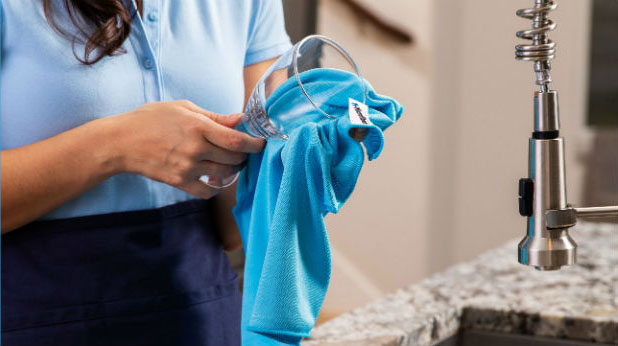
100% Lint Free Microfiber Cloths
These are 100% lint free microfiber glass cleaning cloths. Stop using the wrong cloths and paper towels that leave a bigger mess than they clean up!
Window Cleaning Cloths Make Glass Cleaning Easy!
Use our M-Microfiber Glass Standart Cleaning Cloths damp with just water to clean the glass, and follow up with these glass cleaning microfiber cloths to dry. You will absolutely be amazed by the results.
